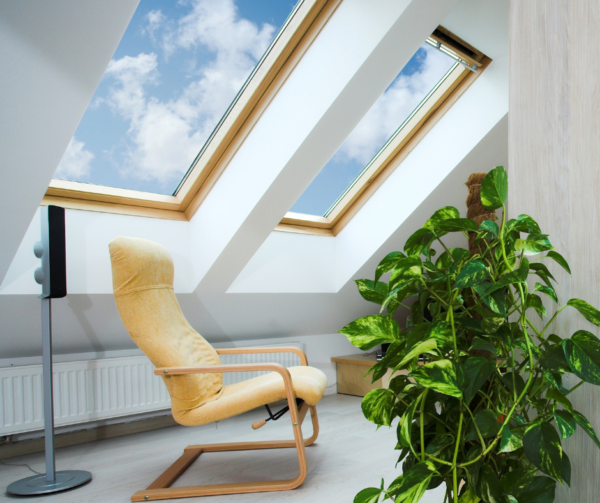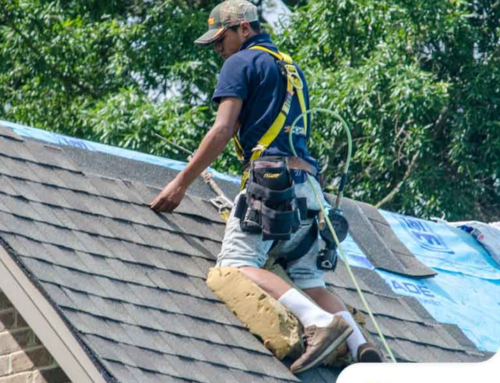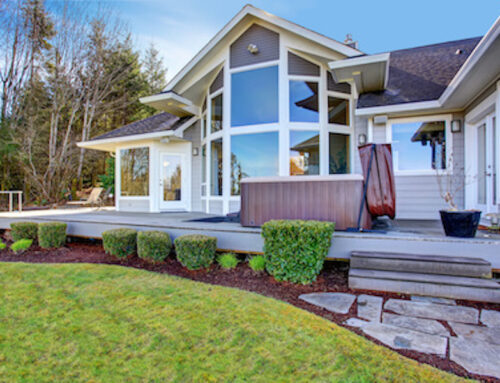 There are advantages to having skylights in your home. Skylights let in up to five times more light than a sidewall window. They also add more warmth to the home. They can create the illusion of more space and add architectural interest. There are options that not only let in sun, but air as well.
There are advantages to having skylights in your home. Skylights let in up to five times more light than a sidewall window. They also add more warmth to the home. They can create the illusion of more space and add architectural interest. There are options that not only let in sun, but air as well.
Once you make up your mind to install a skylight, take a look over Bobvilla.com’s 7 Things to Consider Before Starting a Skylight Installation and keep the following in mind as well:
- Avoid Skylight Glare
You want to install skylights carefully to minimize the chances of sun glare. Install a skylight with a low-solar-gain low-emissivity coating to cut down on heat gain. This won’t stop the sunlight from coming in, but it will reflect the invisible infrared portion of the solar radiation on the skylight, reducing the heat that gets into the house.
Consider installing a tubular skylight which is a reflective cylinder or pipe that is placed between the roof and the ceiling under a clear dome. To minimize the bright, glare-producing sun rays, a diffusing glazing is placed across the bottom of the cylinder.
Make sure you are not adding a skylight that is too large. A skylight can help save energy by reducing the need for electric lighting in daytime and providing warmth in cold weather but skylights that are large or have no shading or diffusing systems usually will become energy liabilities.
- Control the Light.
Custom-designed window shades and blinds can be fitted to your skylight inside the house. There are some drawbacks. Coverings also block the light, which can defeat the purpose of your skylight if you have built it to light a dark room.
Blackout blinds are the best way to block most of the light entering your room from a skylight. Cellular shades are another option. Cellular shades let in a translucent or diffused light. This blocks all direct rays shining into the home but scatters a soft light through the room evenly. Venetian blinds are designed for varying light control while still providing outdoor views.
- Create the Illusion of Space.
Placement of your skylights is key when you want to create the illusion of space. You can create symmetry between skylights and windows to help draw the eye up and create a sense that the room is larger. Offset skylights will offer the same effect but with a more modern look.
Sometimes the ceiling’s architecture seems to call out for a certain skylight installation. Consider complimenting roof ridge symmetry, design features, and decorative beams. Stacking skylights vertically can solve a space challenge in a small space.
- Eliminate Heat Gain.
Skylight shades and covers counteract unwanted heat gain from skylights. Ther is a difference between a shade and a cover. There are different options available when adding a skylight cover. One of the advantages that come with choosing a skylight cover is the option of choosing a cover with electrical components. This makes it possible to have full control over the cover from inside the room. HGTV.com has photo inspiration with Skylight Covers Ideas.
Using sunscreen on your glass skylight is the next most effective way to block unwanted heat. Mounted on the outside, above your glass, it blocks the light rays before they strike the glass. This prevents the glass from transferring the radiant heat into your home.
Installing a skylight on an existing roof can be challenging. You don’t want to end up with roof leaks and mold. Make sure you have the right professional on your side. Contact Dynasty Restoration today and let us help you pick the right skylight for your roof.




